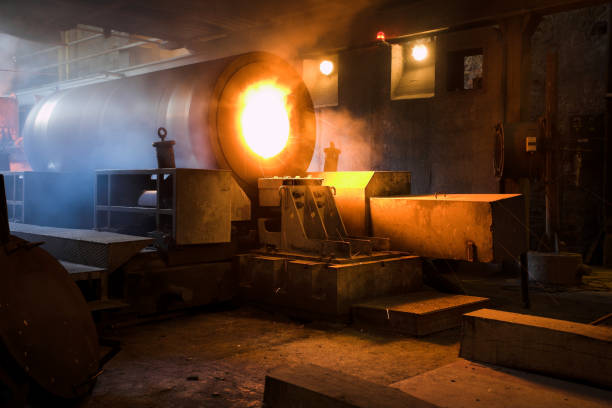What is centrifugal Casting
Centrifugal Casting: A Guide to Methods, Types, and Uses
Introduction
 |
| Tanveer Engineering |
Centrifugal casting is a metal forming method used a lot in manufacturing. Molten metal goes into a spinning mold. The spin spreads the metal out to harden. This makes strong parts without flaws. Many fields pick this method for tough, good parts.
This article looks at how centrifugal casting works. It covers the types and benefits versus other ways to cast metal. We will examine its uses in various fields.
 |
| Tanveer Engineering |
Centrifugal casting uses force from spinning to work. The mold spins fast as liquid metal is poured in. The metal coats the mold's inside evenly. The spinning pushes dirt to the center. This leaves a strong, solid structure.
Centrifugal Casting Steps
Prepare the mold. A cylinder or disc mold is heated. A special coating stops sticking.
Spin the mold. The mold rotates at a set speed. This creates force.
Pour in metal. Liquid metal goes into the spinning mold. It spreads across the mold walls.
Metal hardens. The metal cools slowly and gets hard. This makes a strong cast part.
Cool and take out. The cast cools more. Then, it is taken from the mold. It may get extra work.
Centrifugal casting has advantages over older methods.
It makes stronger parts, free of defects, due to centrifugal force. The material's dense structure improves strength and resists wear. This method cuts costs by reducing wasted material. It works well for round shapes, fitting many uses in industry.
Centrifugal casting has three main types, each for different uses.
- True Centrifugal Casting
This type makes hollow parts such as pipes and tubes. The mold spins, creating even walls and strong materials.
- Semi-Centrifugal Casting
It is used for solid parts that have a center, like wheels. Gravity and spinning work to spread the metal in the mold.
- Centrifuge Molding
This process makes small, detailed parts that must be exact. The mold spins off-center to make many parts at once.
Real Uses of Centrifugal Casting
Many fields use centrifugal casting for strong parts. These fields include:
Cars and Planes: This casting makes engine parts and brake drums.
Oil and Gas: It makes pipes that can handle harsh places.
Boats: It produces strong propeller blades and boat parts.
Power: It creates turbine parts and boiler tubes that resist heat.
Medical: It is used to make parts for implants and tools.
Future of Centrifugal Casting
Centrifugal casting keeps getting better with new tech and materials. 3D molds, AI, and better alloys are improving it. As fields need stronger parts, this casting will become more important.
Conclusion
Centrifugal casting is a great method because it is exact, strong, and fast. The process uses force to remove flaws. It also makes the metal parts stronger. Many fields use it, like space travel and medicine. This makes it key to modern work.
Centrifugal casting is a top pick for strong, high-quality parts. It is a fine choice for manufacturers. The process will get better with new tech. More areas will start to use it.



Comments
Post a Comment